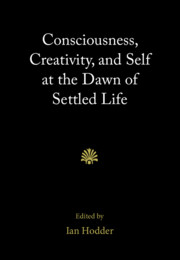Book contents
- Consciousness, Creativity, and Self at the Dawn of Settled Life
- Consciousness, Creativity, and Self at the Dawn of Settled Life
- Copyright page
- Contents
- Contributors
- Acknowledgments
- Part I Introduction to the Themes, Site, and Region
- Part II Higher Levels of Consciousness
- 3 When Time Begins to Matter
- 4 Cognitive Change and Material Culture
- 5 Conscious Tokens?
- 6 Brick Sizes and Architectural Regularities at Neolithic Çatalhöyük
- Part III Greater Innovation and Creativity
- Part IV Greater Awareness of an Integrated Personal Self
- Notes
- Index
- References
3 - When Time Begins to Matter
from Part II - Higher Levels of Consciousness
Published online by Cambridge University Press: 22 February 2020
- Consciousness, Creativity, and Self at the Dawn of Settled Life
- Consciousness, Creativity, and Self at the Dawn of Settled Life
- Copyright page
- Contents
- Contributors
- Acknowledgments
- Part I Introduction to the Themes, Site, and Region
- Part II Higher Levels of Consciousness
- 3 When Time Begins to Matter
- 4 Cognitive Change and Material Culture
- 5 Conscious Tokens?
- 6 Brick Sizes and Architectural Regularities at Neolithic Çatalhöyük
- Part III Greater Innovation and Creativity
- Part IV Greater Awareness of an Integrated Personal Self
- Notes
- Index
- References
Summary
Although ideas of space and time strongly influence human consciousness, decisions and activities, investigations into time concepts have been almost neglected in prehistoric archaeology. In this chapter new results of social neurobiology, sociology and archaeology are combined to focus on how time concepts might have changed at the transition to sedentary farming communities. Sociological studies have shown that, in every society, at least three concepts of time exist: episodic, cyclical and linear. The archaeological evidence from the early Neolithic of the Near East suggests that there was no linear evolution from episodic, to cyclical and then on to linear concepts of time. It seems that increasing circular and linear concepts of time were related to concepts of confined personal and social identities in sedentary agricultural communities. Anticipating and assessing environmental conditions and long-term planning became crucial cognitive capacities within farming communities. Episodic concepts of time were marginalized.
- Type
- Chapter
- Information
- Publisher: Cambridge University PressPrint publication year: 2020



